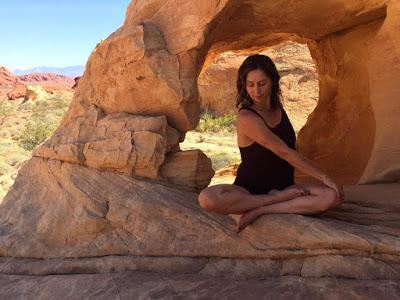
Melina Meza photographed by Nityia Przewlocki
"Our skin is no neutral envelope; it is a busily sensing organ that situates us in relation to others and the world." —Adam GopnikJust a quick post today to let you know about a really interesting article Feel Me by Adam Gopnik, in recent edition of “The New Yorker." It’s all about how underrated our sense of touch is, and includes a long discussion of tactile research.
“We don’t appreciate how much of our behavior is governed by our intense sensitivity to pressure,” Dustin Tyler, the fresh-faced principal investigator on the Cleveland project, says, observing Spetic closely. “We think of hot and cold, or of textures, silk and cotton. But some of the most important sensing we do with our fingers is to register incredibly minute differences in pressure, of the kinds that are necessary to perform tasks, which we grasp in a microsecond from the feel of the outer shell of the thing. We know instantly, just by touching, whether to gently squeeze the toothpaste or crush the can.”
Although the article tends to focus on the hands, in yoga, we use our tactile senses to help us balance on our feet, as well as on our hands, sitting bones, forearms, shins, and so on. As we’re balancing, we respond to texture of the surface on which we’re balancing. And that’s why one technique you can use for improving balance or agility is to vary the surface you practice on.But we also use our tactile senses to feel our alignment in our poses. Although some of the ability to feel our alignment comes from prioprioception, our internal sense of where we are in space, you use your skin to sense whether your weight is evenly distributed on your feet or hands, whether your top foot is in the right place in Tree pose or Eagle pose, whether your palms are pressing together completely in Reverse Prayer pose, or if you’ve actually grabbed your elbows or just your forearms when you take both arms behind your back. And, OMG, you finally made the clasp in Cow-Face pose (Gomukasana)!In "Feel Me," Gopnik observes:“One strange thing about the unsung sense is that it has no songs. Every other sense has an art to go with it: the eyes have art, the ears have music, even the nose and the tongue have perfume and gastronomy. But we don’t train our hands to touch as we train our eyes to look or our ears to listen.”But I beg to differ. Practicing yoga mindfully partly means training your skin to be more sensitive as you tune into subtle all-over body sensations. And I'm thinking that this might be one reason why practicing asanas can be such a beautiful experience, you know, like music or art.“Our bodies are membranes in the world, with sensation and meaning passing seamlessly through them. Our experience of our bodies—the things they feel, the moves they make, and the textures and the people they touch—is our primary experience of our minds.”Subscribe to Yoga for Healthy Aging by Email ° Follow Yoga for Healthy Aging on Facebook ° Join this site with Google Friend Connect

